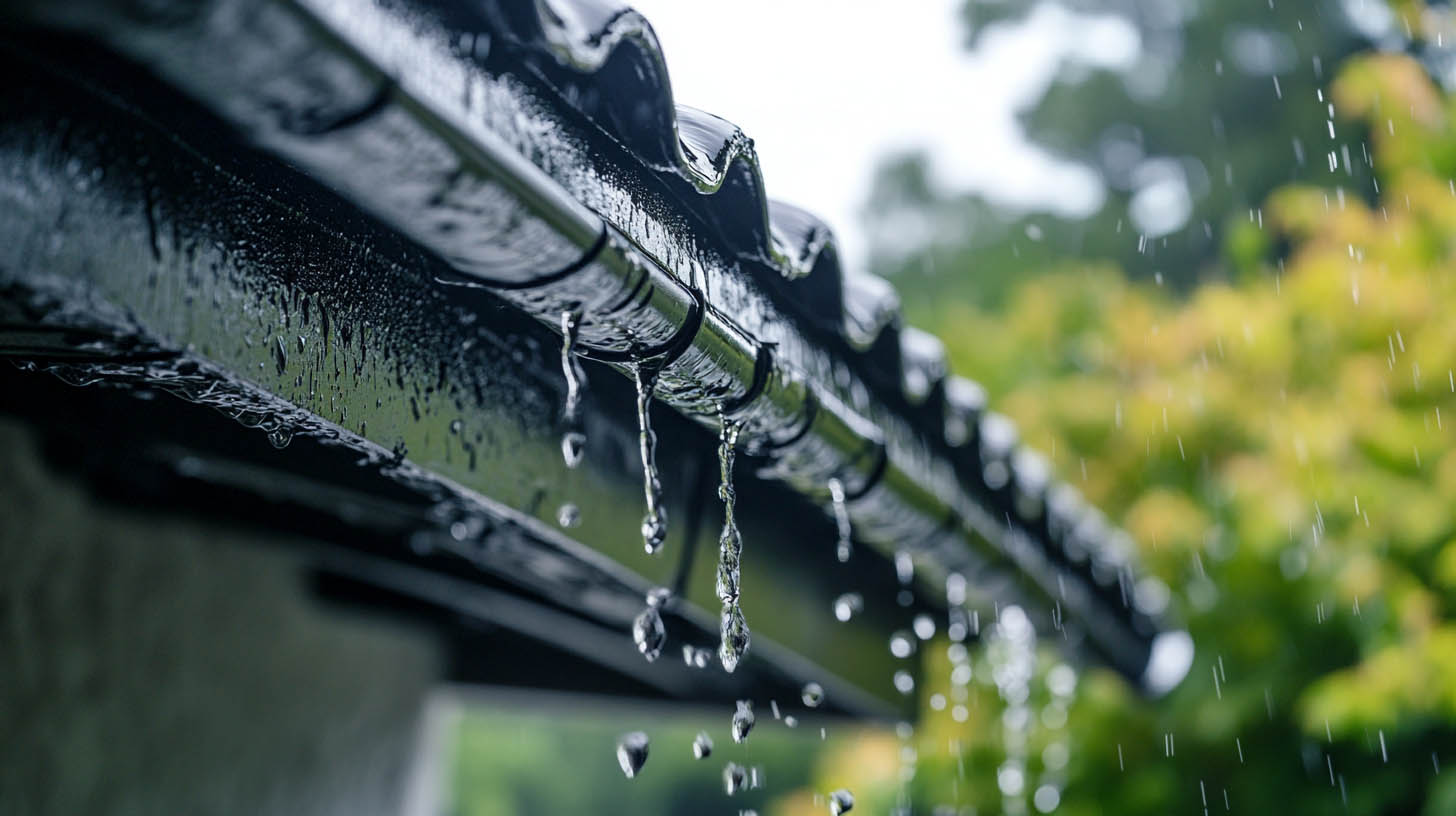
Proper roof drainage is essential to protect your home from water damage. By selecting and maintaining the right drainage system, you can prevent issues like leaks, mold, and structural damage. Trusted professionals like Rainstoppers Roofing in Charleston, WV, ensure effective roof drainage solutions tailored to your needs.
The Importance of Roof Drainage Systems
Water accumulation on your roof can lead to numerous problems, including leaks, foundation erosion, and a shortened roof lifespan. Statistics show that water damage accounts for nearly 30% of homeowner insurance claims annually in the U.S. A proper drainage system ensures water is diverted away, preserving the integrity of your home.
Common Signs of Poor Roof Drainage
- Water overflowing from gutters
- Pooling water near the foundation
- Mold or mildew odors in the attic
- Moisture buildup in ceilings or walls
- Water stains along basement walls
- Cracks in the home’s foundation
Types of Roof Drainage Systems
Gutters
Gutters are a staple of sloped roof drainage. Installed along the edges of your roof, they collect water and direct it away via downspouts. Regular maintenance, including annual cleaning, ensures they function efficiently and prevent clogging from leaves and debris.
Scuppers
Scuppers are openings along the edge of flat roofs that allow water to flow off the roof. Often lined with metal or plastic, they are paired with downspouts to protect the foundation. Scuppers are a simple yet effective option for flat roof drainage.
Inner Drains
Inner drains are built into the roof’s structure, channeling water through internal pipes. This system is aesthetically pleasing and eliminates external downspouts, making it a popular choice for modern architecture. However, it requires regular maintenance to avoid blockages.
Siphonic Drains
Siphonic drains use negative pressure to rapidly remove water, making them one of the most efficient systems for flat roofs. While highly effective, they require precise planning and installation, often making them less practical for residential use.
Choosing the Right Drainage System
Your roof’s type, pitch, and regional weather conditions determine the most suitable drainage system. For instance, homes in high-rainfall areas benefit from siphonic drains, while traditional sloped roofs work well with gutters. Consulting with professionals ensures the right fit for your property.
Maintenance Tips for Roof Drainage Systems
- Clean gutters and downspouts annually to prevent clogs.
- Inspect scuppers for debris and clear them as needed.
- Check inner and siphonic drains for blockages and ensure they’re functioning correctly.
- Trim nearby tree branches to minimize debris accumulation.
- Schedule routine inspections with a roofing expert like Rainstoppers Roofing to maintain your system’s efficiency.
Unique Fact: Flat Roof Drainage Challenges
Flat roofs can retain up to 10 gallons of water per inch of rain over a 1,000-square-foot area. Proper drainage systems prevent structural strain and ensure longevity.
Conclusion
A well-designed and maintained roof drainage system is critical for protecting your home from water damage. Whether you opt for gutters, scuppers, or siphonic drains, addressing drainage needs proactively will save time, money, and stress. Partner with experts like Rainstoppers Roofing to secure your home against water damage.
FAQs
Q1: How often should gutters be cleaned?
Gutters should be cleaned at least once a year, preferably in the fall to remove leaves and debris.
Q2: Are scuppers suitable for all roof types?
Scuppers are best for flat roofs, as they efficiently channel water away without the need for extensive piping.
Q3: How can I prevent gutter clogs?
Installing gutter guards reduces debris accumulation, minimizing the need for frequent cleaning.
Q4: What is the lifespan of a roof drainage system?
With proper maintenance, most systems last 20–30 years, though material and environmental factors may influence longevity.
Q5: Can I install a roof drainage system myself?
While DIY installation is possible for basic systems, professional installation ensures proper design and long-term performance.To get essential tips for preparing your roof for winter, click here.
